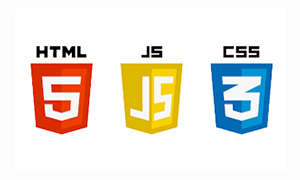Full Stack
Full Stack Technology
Full Stack Technology refers to the development of both the front-end (client-side) and back-end (server-side) portions of a web application. A full stack developer is proficient in working with all the technologies required to build a complete, functional application. This approach ensures seamless integration between the user interface and the server-side logic, providing a cohesive and efficient development process.
Front-End Development
Front-End Development encompasses creating the visual and interactive aspects of a web application. Using technologies like HTML, CSS, and JavaScript, along with modern frameworks such as Angular, React, or Vue.js, front-end developers build responsive and engaging user interfaces. Their responsibilities include designing layouts that adapt to various devices, ensuring a smooth and intuitive user experience, and implementing design principles that enhance usability.
They focus on optimizing performance and accessibility, making sure the application is fast and usable by a diverse audience. By integrating aesthetic appeal with functionality, front-end development plays a crucial role in user satisfaction and overall application success.
Back-End Development
Back-End Development involves managing the server-side logic and database interactions that power web applications. Using technologies like Node.js, Python, Ruby, Java, or PHP, back-end developers create the core computational logic, ensuring that data is correctly processed and served to the front end. They handle database interactions, managing the storage, retrieval, and updating of data efficiently.
Responsibilities also include implementing authentication systems to secure user data and managing API integrations to connect with third-party services. By focusing on server logic, performance optimization, and security, back-end development ensures the application's reliability, scalability, and smooth operation, forming the backbone of robust web solutions.
Database Management
Database Management is crucial for storing, organizing, and retrieving data efficiently in web applications. Utilizing SQL databases like MySQL and PostgreSQL, as well as NoSQL databases like MongoDB and Cassandra, database managers design and implement robust database structures tailored to application needs. They are responsible for ensuring data integrity, meaning that data is accurate, consistent, and reliable.
This involves setting up proper indexing, relationships, and constraints. Additionally, database managers optimize queries to enhance performance, ensuring fast and efficient data retrieval and processing. Their role is vital for maintaining seamless data flow and supporting the overall functionality and scalability of applications.
Python Technology
Python Technology in Full Stack Development is highly valued for its versatility and efficiency. As a back-end technology, Python, with frameworks like Django and Flask, provides robust server-side logic, handling database interactions, authentication, and API integrations seamlessly. Its clean syntax and readability accelerate development, making it easier for developers to write, maintain, and scale applications.
Python's extensive libraries and modules support a wide range of functionalities, from data processing to machine learning, enhancing application capabilities. When combined with front-end technologies like JavaScript, HTML, and CSS, Python ensures a cohesive and efficient full stack development process, delivering powerful, scalable, and maintainable web applications.
Version Control
Version Control is a critical aspect of full stack development, ensuring organized and efficient code management. Using tools like Git, GitHub, and Bitbucket, developers can track and manage code changes systematically. These tools facilitate collaboration among team members by allowing multiple developers to work on the same codebase simultaneously, resolving conflicts and merging updates seamlessly. Responsibilities include maintaining a detailed history of project development, enabling developers to revert to previous versions if necessary, and documenting changes to improve transparency and accountability. Version control systems also support branching and merging strategies, enhancing workflow and productivity in development projects.
Deployment and Hosting
Deployment and Hosting involve the processes and technologies required to launch and maintain applications in a live environment. Using cloud services like AWS, Azure, and Google Cloud, developers can deploy applications with scalable and flexible infrastructure. These platforms provide essential services for managing server resources, storage, and networking, ensuring that applications perform efficiently and reliably.
Containerization tools such as Docker and Kubernetes play a crucial role in simplifying deployment by encapsulating applications and their dependencies into containers, which can be easily managed and scaled. Responsibilities include configuring and managing server infrastructure, monitoring application performance, and implementing strategies to ensure scalability and high availability. Effective deployment and hosting are vital for delivering a seamless user experience and maintaining operational continuity.















